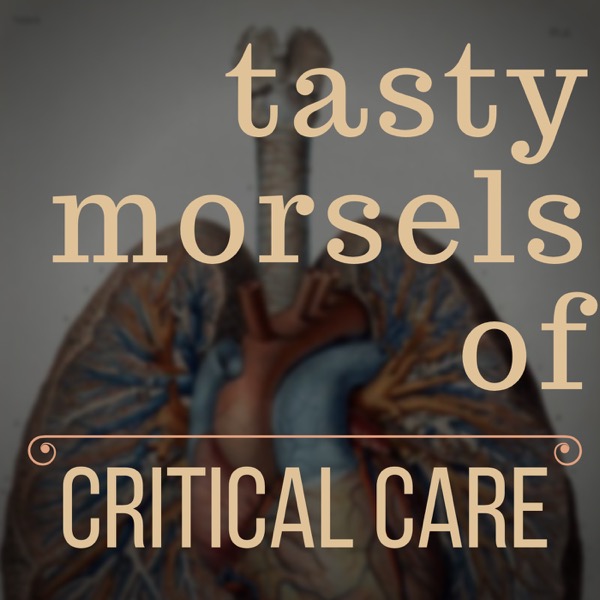Tasty Morsels of Critical Care 048 | Anaphylaxis
Tasty Morsels of Critical Care - A podcast by Andy Neill - Mondays

Welcome back to the tasty morsels of critical care podcast. Today we look at anaphylaxis. Oh’s Manual 67 forms the basis for most of this. In many ways this is fairly straightforward. You give adrenaline and they get better. However once you get into the pathophys behind it you start to realise why immunologists are much smarter than you are. Oh starts with a few nice descriptions of what it is: an acute multi system disorder with release of multiple mediators from mast cells and basophils. Usually this is a hypersensitivity reaction mediated by IgE to a foreign substance. The term anaphylactoid is reserved for non IgE mediated reactions. (These still involve mast cell degranulation) The current guideline accepted definition goes like this serious, life threatening generalised or systemic hypersensitivity reaction that may or may not be immune (ie IgE) mediated While accurate this doesn’t really help me very much in knowing what it looks like. A better description for what it looks like goes as follows: Anaphylaxis is highly likely in the following scenarios * acute onset with skin or mucosal involvement plus at least one of respiratory compromise or reduced BP. * Rash and shock or rash and SOB means anaphylaxis * the term mucosal involvement can mean the tongue and pharynx but also the rest of the GI tract. Let’s say you eat a peanut get tummy cramps, diarroeah and a BP of 60 systolic. No wheeze, no rash – this is still anaphylaxis. * reduced BP after exposure to a known allergen for that patient. The pathophysiology is mostly beyond me but the predominant features are mainly histamine mediated and there is release of serotonin and tryptase in addition. The precipitants can be split up into a number of classes * Food * peanuts, crustaceans and fish, sometimes persisting into adulthood. * Interestingly there is there is food associated, exercise induced anaphylaxis where exercise 2-3 hrs post the allergen causes the reaction * Drugs are incredibly common. * penicillins and cephalosoporins are the commonest antibiotics * NMBs such as rocuronium are an important bogey man in anaesthesia and may occur without prior exposure. If you only ever use it in the critically ill then it’ll be a while before you pick up a serious case of it appears to me. * NSAIDs, Aspirin * Radiology contrast * Protamine * Chlorhexidine is a common and often overlooked cause * Rare beasts like mast cell disorders like systemic mastocytosis Tryptase gets a lot of attention (not without reason) in both anaesthesia and EM circles. Peak levels occur ~15-120 mins post event and decline predictably (T1/2 ~2hrs). This influences the timing of sampling as recommended in the UK guidelines with one sample taken as soon as possible and another within 4 hrs and then a 3rd convalescent sample either >24 hrs post resolution or at allergy clinic. It is critical to understand that this is a test useful in follow up to confirm diagnosis and should not be involved in the decision whether or not to give adrenaline acutely. Treatment is adrenaline. The ALS guidance is all about the IM and this should continue to be the case though there is a caveat for IV adrenaline use by “experts” in quotation marks. Oh is quite pro IV infusions and certainly in the ICU and OT this is ubiquitous and generally well done in my experience. Oh mentions vasopressin, glucagon and even methylene blue as rescue treatments but UK ALS only recommends glucagon for those beta blocked and vaso for those refractory to IV adrenaline. Another interesting point from the UK guidance is an emphasis on lying the patient flat,
